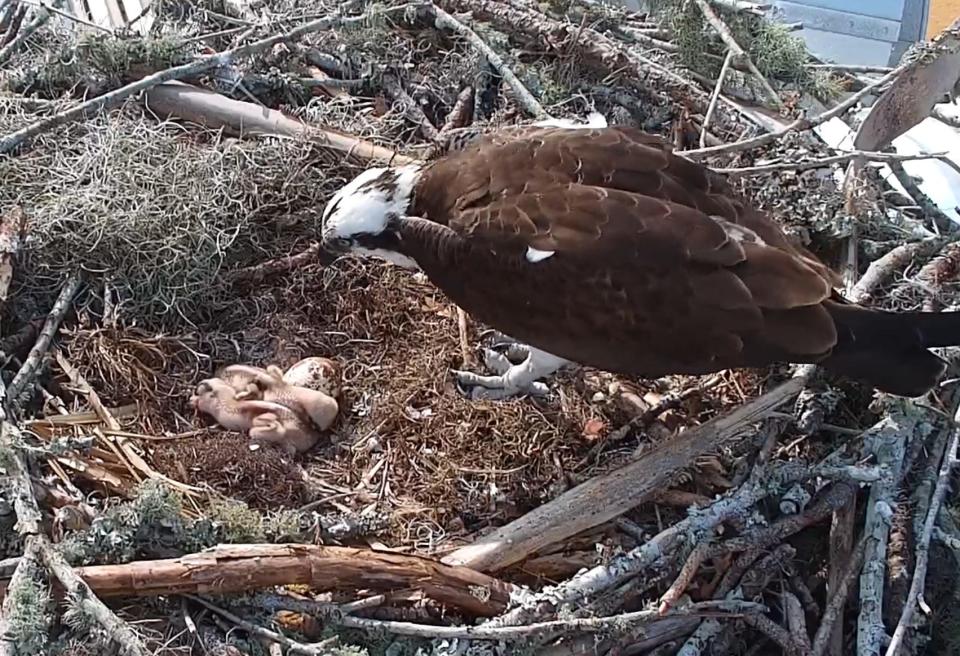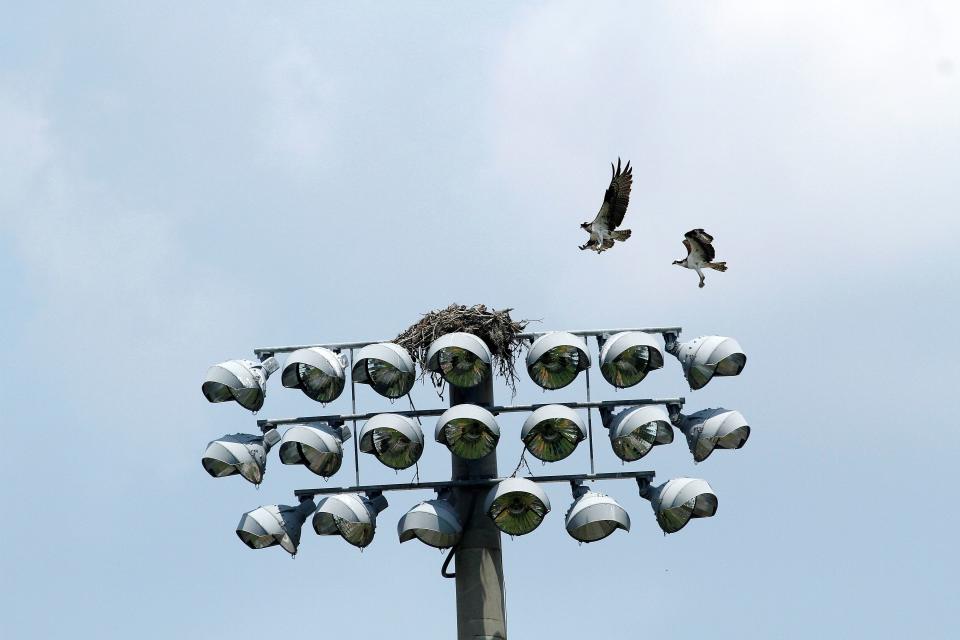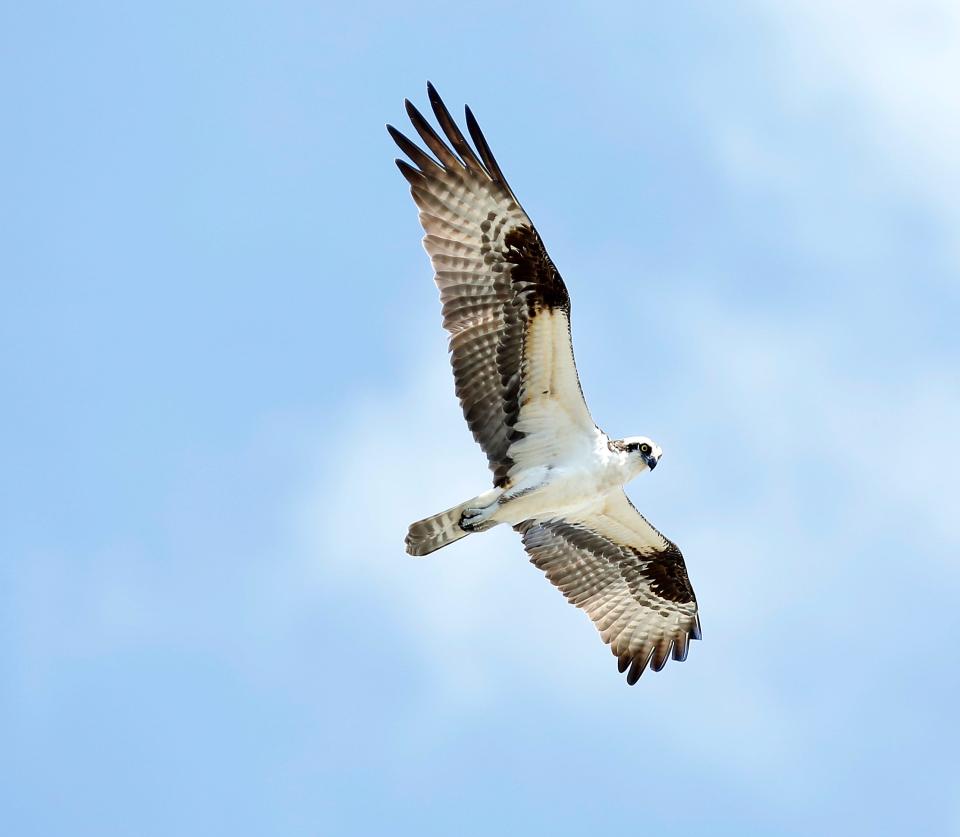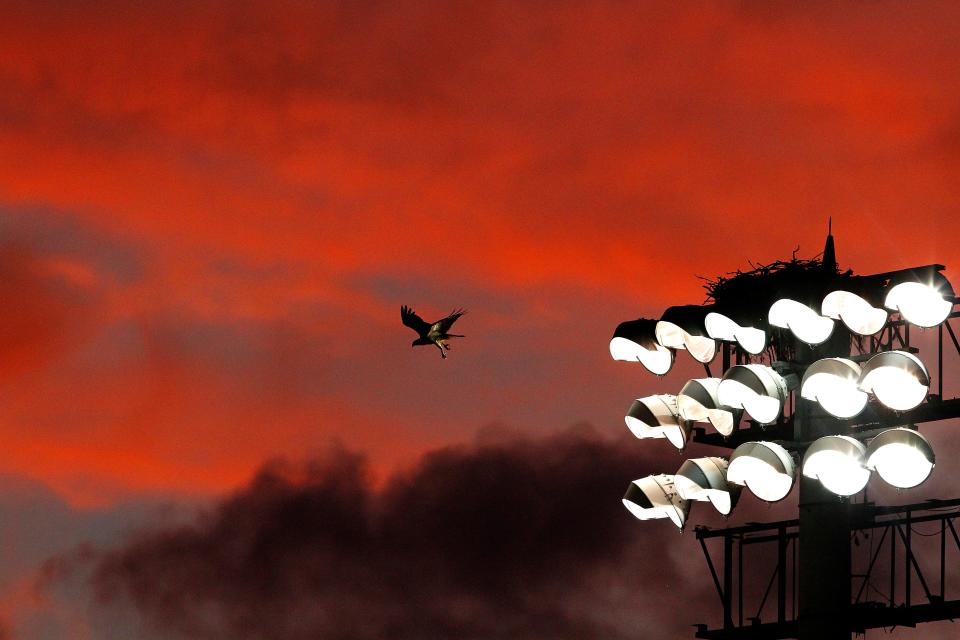Live webcam captures newborn ospreys in nest at University of Florida
A pair of feathered parents are awaiting the arrival of their third hatchling — and just about anyone has the opportunity to catch a glimpse of it happening live.
A University of Florida osprey cam is mounted above a large osprey nest atop an 80-foot-tall set of lights at one of the recreational softball fields on campus. Run by the Department of Wildlife Ecology and Conservation, the camera has a website with a 24-hour-feed allowing for an up-close look at an osprey family with their two babies.
One chick was born on April 5 at about 4:45 p.m. and the second was born on April 6 around 10 a.m. As of Friday afternoon, there is still one egg that has not hatched.
Department officials believe the third egg will hatch in the next few days, but remind people this is a view of a wild osprey nest.
In nature, things like "sibling rivalry, predators, and natural disaster can affect the osprey family and may be difficult to watch," according to the Florida Wildlife Extension website.

One in a million: Flight of the yellow cardinal: bird with rare mutation draws interest across Florida
More: Alachua nature observers are world leaders in spotting plants and animals
“An osprey is a bird of prey, it eats primarily fish, and it’s a very efficient fisherman,” said Mark Hostetler, an urban wildlife ecologist in the UF Department of Wildlife Ecology and Conservation.
Hostetler is the champion of the osprey cam. He also “directs” what is seen on the feed by moving the camera and zoom in and out.
The team noticed the first egg in the nest on March 1. Then two more showed up.
"We have been watching the two courting for about a month now,“ Hostetler said
Over the last month, the male has been flying off to get fish for the female, as she has been caring for the eggs and preparing the nest, Hostetler said.

The first few years of the osprey cam weren't all that successful.
In 2017, Hostetler got permission to install the first osprey cam on a light pole at the old McKethan Stadium baseball field at UF. The first known eggs in the location fell through the nest and the osprey parents moved on.
The next year, the 80-foot-tall pole was struck by lightning. The nest and camera were destroyed. As construction started on the new student athletic center and McKethan Stadium was demolished, the osprey cam program was grounded.
Earlier this year, the project got rejuvenated with money from the Department of Wildlife Ecology and Conservation. Hostetler was able to get permission from UF to put up another live-feed camera on a new nesting area.
The birds are migratory and travel to central and South America, then back to North America in the spring to mate and raise their young. But the nest typically stays year-round.
When Hostetler was trying to get the camera set up in January, the timing was everything. He saw a pair of ospreys flying overhead, circling the nest where the camera was being installed. He wasn't sure if he was too late and whether the birds would vigorously defend their nest.
Luckily, by March, the nest had eggs and the osprey parents had become nature's reality show.
“People's connections to nature can happen right in an urban area, nature is right around you,” Hostetler said. "It's in the backyard. It's in the neighborhoods. It's even in the cities.

Karen Brown, president of the Alachua Audubon Society, said local birdwatchers didn't know a lot about the web camera on the nest at UF's campus. But interest is growing. "It's not often you get to see a large raptor sitting on a nest," Brown said. "People are getting excited about it."
The osprey cam runs 24 hours a day and has infrared lighting so that viewers can see what the osprey are up to at night. But don't expect too much action in the late hours, as the ospreys are mostly sleeping or just sitting in the nest at night.

Like most birds, the chicks will be more active during the day. As the chicks start to eat on their own, experts say they will be more visible as they move around. Soon they will begin to get feathers and viewers might catch a glimpse of the young ospreys taking their first flights.
"Watching the nest cam is only going to get better as the chicks grow and mature,” Brown said.
To view the birds in action, visit bit.ly/37rk1Mm.
This article originally appeared on The Gainesville Sun: Florida webcam captures newborn ospreys in nest

